Creating a vibrant indoor garden can seem like a daunting task, especially if you’re just starting out. Yet, with the right selection of colorful indoor plants, even the most novice gardener can transform their home into a lush, inviting haven. Whether you’re a beginner looking to dip your toes into the world of houseplants or an experienced green thumb seeking to diversify your collection, understanding the unique appeal and care needs of these plants is essential. Embracing the beauty of indoor gardening not only enhances the aesthetics of your living space but also offers a sense of tranquility and accomplishment.
In this article, we’ll explore twelve stunning indoor plants that are perfect for beginners and seasoned enthusiasts alike. You’ll discover how each plant brings its own burst of color and character to your home, while also learning practical tips to keep them thriving. From the vibrant hues of the Calathea to the striking patterns of the Polka Dot Plant, there’s something to suit every taste and style. Get ready to be inspired and empowered as you embark on this colorful journey, turning your indoor space into a lively garden retreat with ease and confidence.
Introduction to Colorful Houseplants

Colorful houseplants can transform any indoor space with their vibrant hues and unique textures. For beginners, it’s important to choose plants that are easy to care for and adaptable to various light conditions.
One excellent option is the African Violet, which thrives in bright, indirect light and requires a well-draining potting mix. Water it when the soil feels dry to the touch, making sure to avoid wetting the leaves to prevent spotting.
Another striking choice is the Calathea, known for its bold leaf patterns and rich colors. These plants prefer high humidity and should be kept in a room with temperatures between 65°F and 75°F.
For those looking to add a splash of red, consider the Red Aglaonema. This plant is tolerant of low light and prefers to be watered when the top inch of soil is dry, making it a perfect choice for beginners.
Choosing Easy-Care Indoor Plants
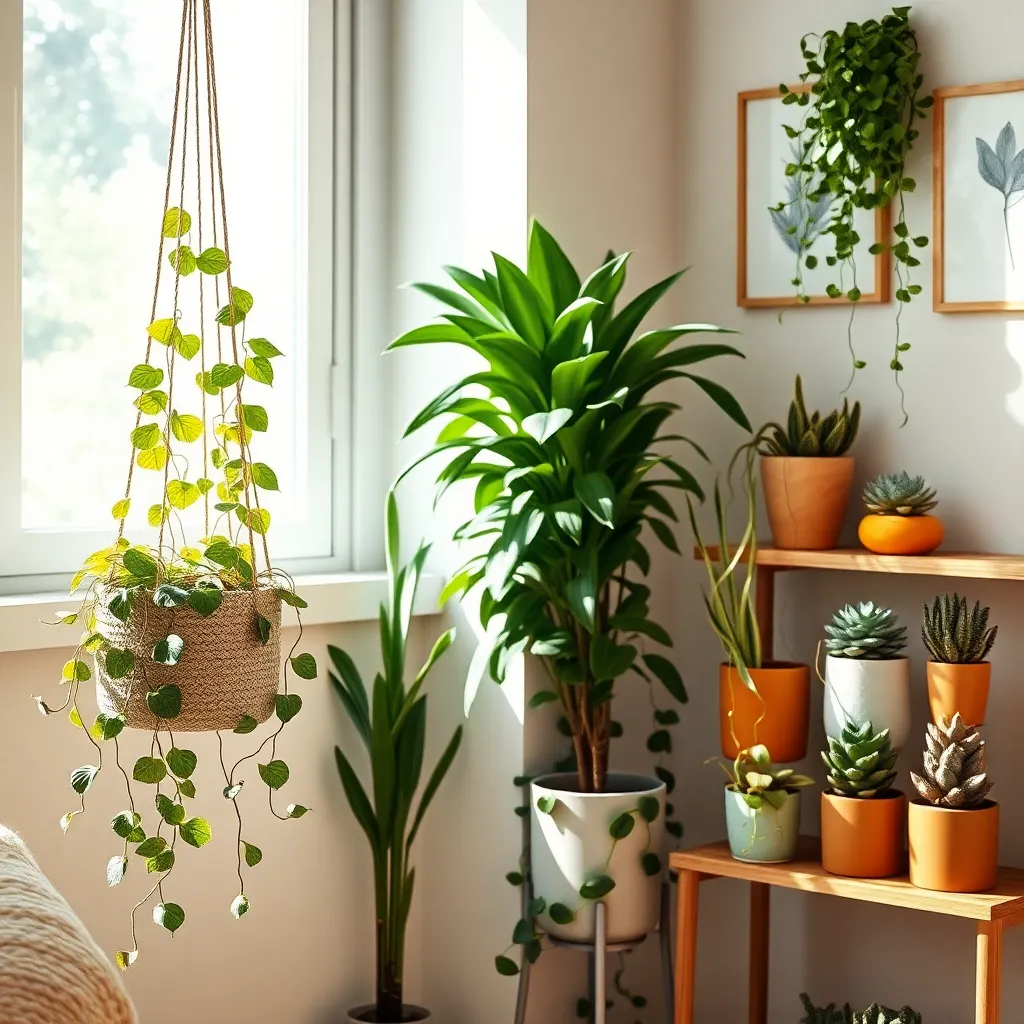
Choosing easy-care indoor plants is a great way to bring vibrant color into your home without adding stress to your life. When selecting plants, consider those that thrive in a variety of light conditions and are forgiving with watering schedules.
Snake plants are an excellent choice for beginners due to their resilience and low maintenance needs. They can tolerate low light levels and require watering only once every two weeks, making them perfect for those who may forget regular watering.
Another fantastic option is the pothos plant, known for its heart-shaped leaves that come in a variety of colors. This plant thrives in indirect sunlight and only needs water when the soil is dry to the touch, ensuring it remains healthy with minimal effort.
For those looking to add a splash of color, consider the peace lily, which features striking white blooms. It flourishes in low to medium light and prefers to be watered about once a week; however, it will tell you when it needs water by drooping slightly.
Incorporating these easy-care plants into your home can boost your confidence as a new gardener while adding life and color to your space. Remember to choose pots with good drainage and use a well-draining potting mix to ensure your plants remain healthy and vibrant.
Philodendron: Vibrant Green Appeal
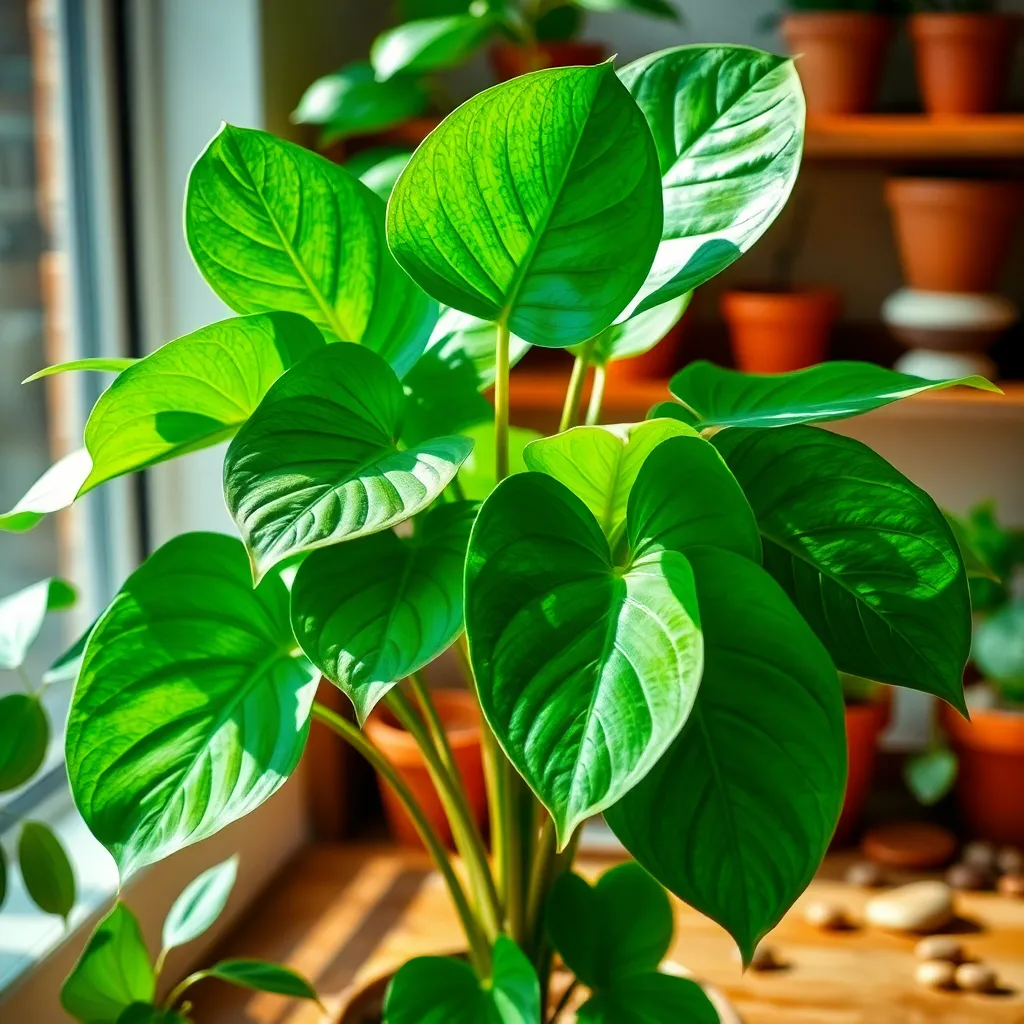
Philodendrons are a fantastic choice for beginners due to their low-maintenance nature and lush, vibrant green leaves. They thrive in a variety of indoor environments, making them an adaptable addition to any home.
To ensure your philodendron flourishes, place it in a spot with indirect sunlight. Direct sunlight can scorch the leaves, so a north or east-facing window is ideal.
When it comes to watering, allow the top inch of soil to dry out before watering again. This approach prevents root rot, which is a common issue if the plant is overwatered.
For soil, choose a well-draining potting mix to keep the roots healthy. A mix containing peat moss, perlite, and orchid bark works well to provide necessary aeration and drainage.
Advanced gardeners might consider propagating their philodendrons through stem cuttings. Simply cut a healthy stem with a few leaves and place it in water until roots form, then transfer it to soil.
Brighten Spaces with Peace Lilies
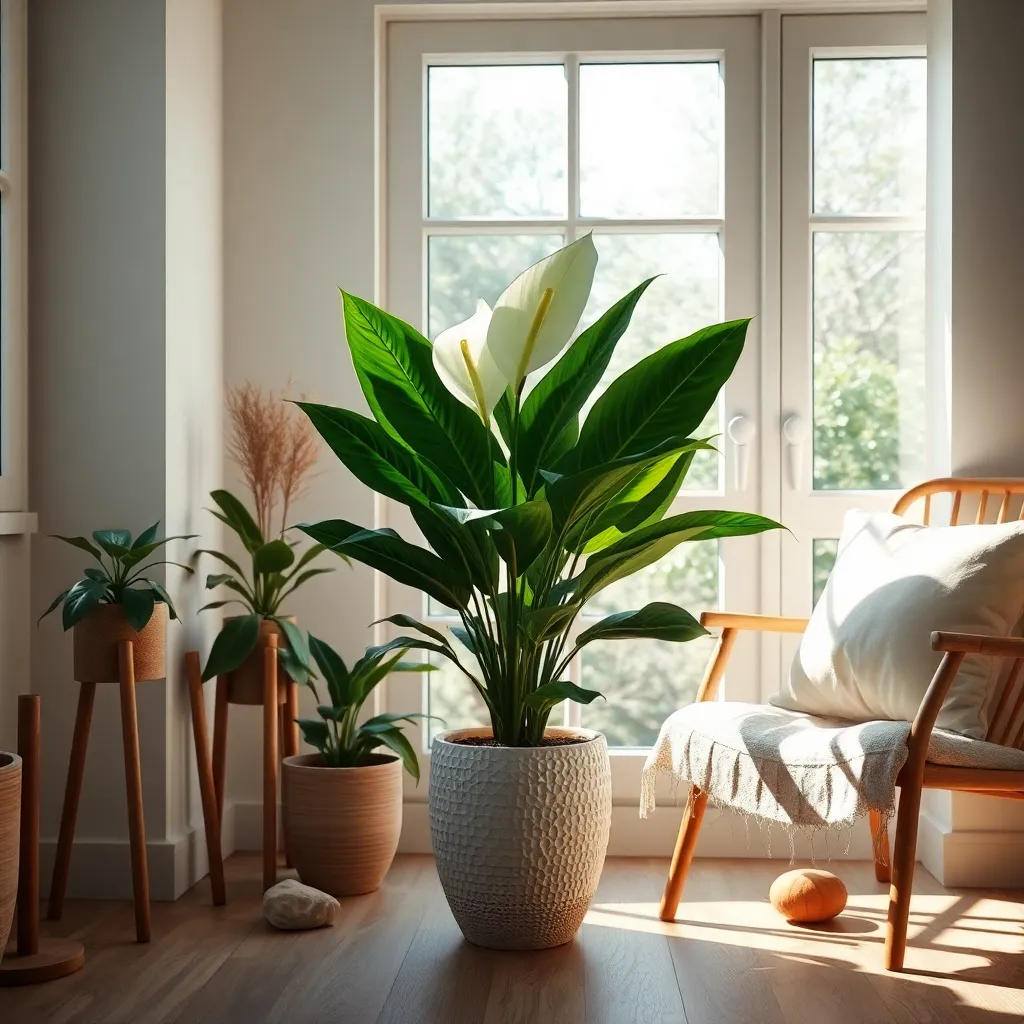
Peace lilies are a wonderful choice for those looking to add a touch of elegance to their indoor spaces. Known for their lush green leaves and striking white blooms, these plants thrive in low-light conditions, making them perfect for rooms with less natural light.
To keep your peace lily healthy, ensure it is planted in a well-draining potting mix. A blend that includes peat moss, pine bark, and perlite will provide the ideal environment for root development.
Watering is a crucial aspect of peace lily care; aim to keep the soil consistently moist but not waterlogged. Check the soil moisture by sticking your finger about an inch into the soil; if it feels dry, it’s time to water.
For those looking to boost their peace lily’s growth, consider feeding it with a balanced liquid houseplant fertilizer every 6-8 weeks during the growing season. This small investment in feeding will reward you with more vibrant foliage and frequent blooms.
Colorful Calatheas for Beginners
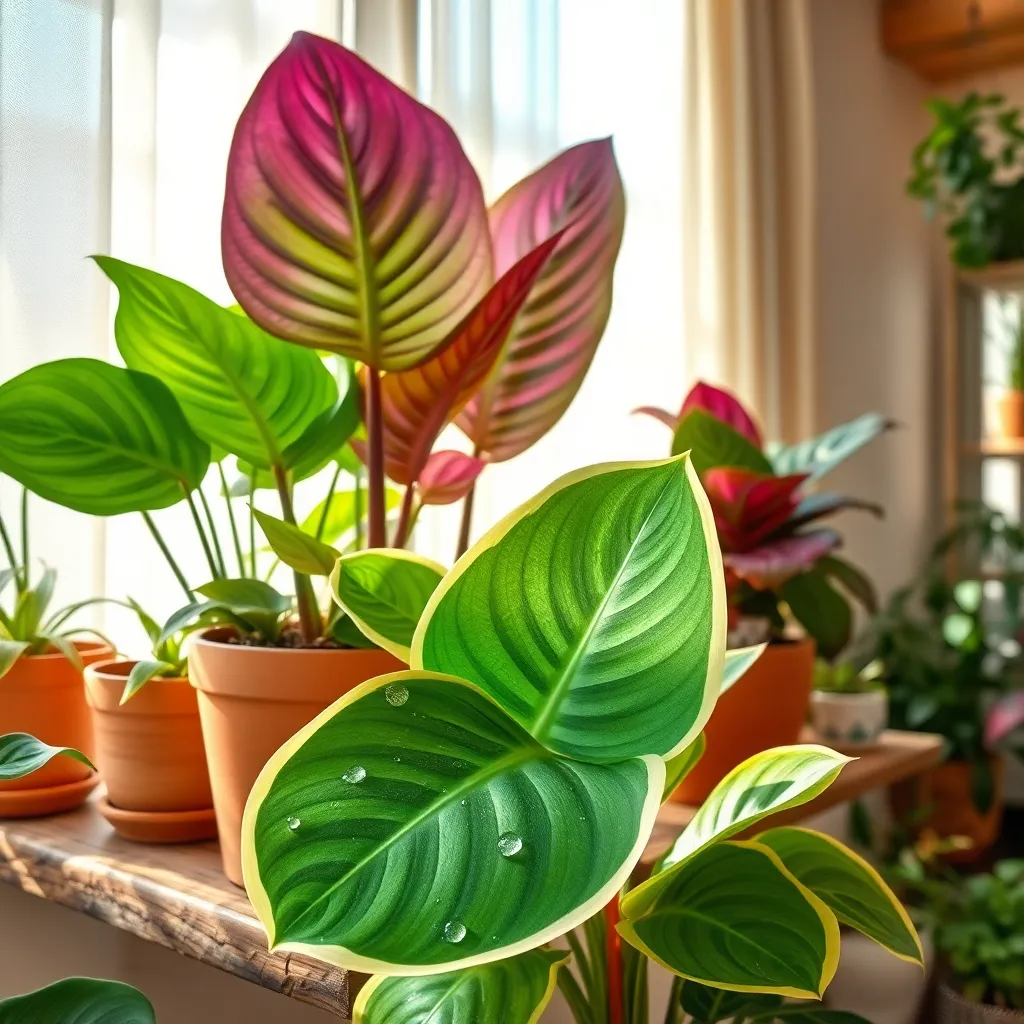
Calatheas are perfect for beginners who want a vibrant indoor plant collection. Known for their stunning foliage, these plants thrive in indirect light, making them ideal for homes and offices.
To ensure your Calatheas flourish, maintain a consistent watering schedule. Water them when the top inch of soil feels dry, using distilled or rainwater to prevent leaf browning from tap water chemicals.
Humidity is crucial for Calatheas, as they naturally come from tropical environments. Place a small humidifier nearby or group them with other plants to create a microclimate that boosts humidity levels.
For those ready to take an extra step, consider using a well-draining potting mix rich in organic matter. A blend of peat, pine bark, and perlite will keep the roots healthy and prevent waterlogging.
Striking Snake Plants Explained
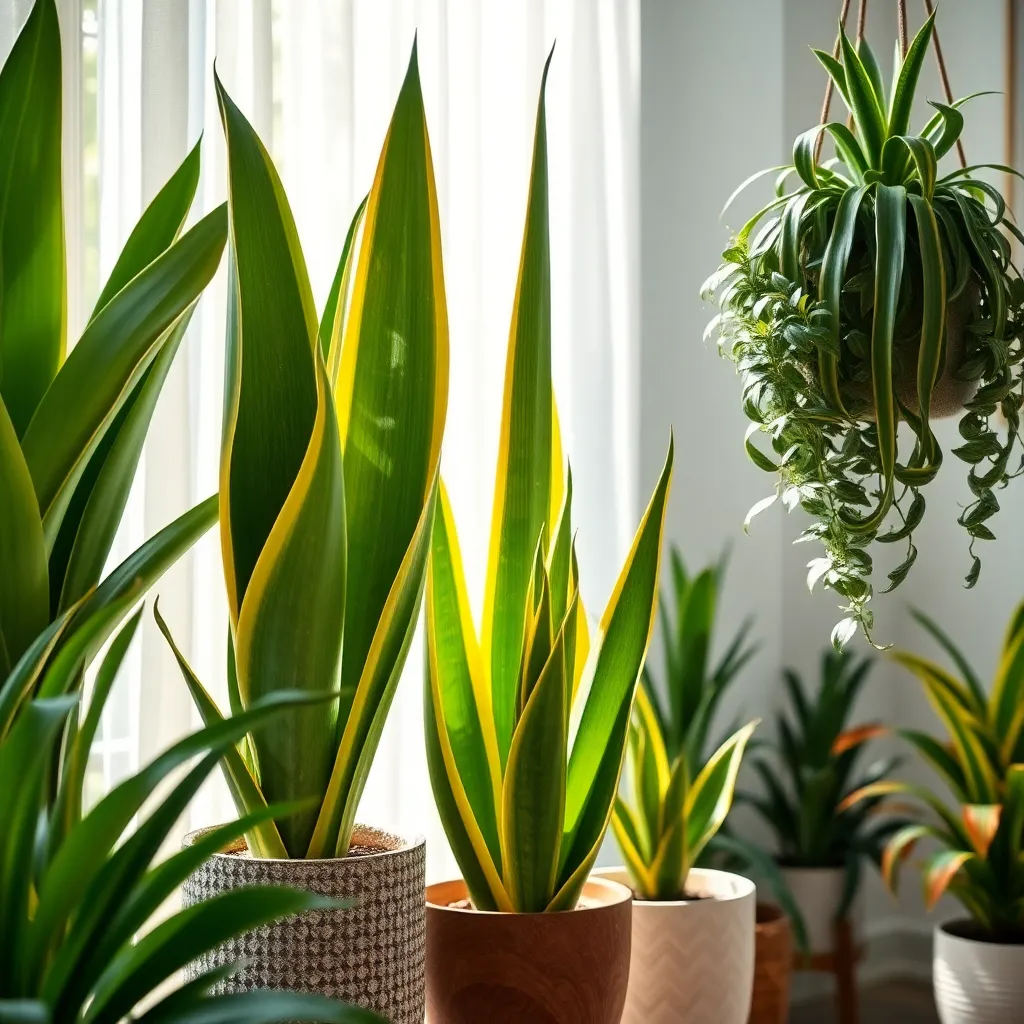
Snake plants, also known as Sansevieria or mother-in-law’s tongue, are perfect for beginners due to their resilience and low maintenance. These hardy plants can adapt to a wide range of lighting conditions, making them ideal for various indoor spaces.
To ensure your snake plant thrives, place it in well-draining soil, such as a cactus or succulent mix. Water sparingly, allowing the soil to dry completely between waterings, usually every 2-3 weeks.
For optimal growth, keep your snake plant in temperatures ranging from 60°F to 80°F. Avoid cold drafts and sudden temperature changes, as these can stress the plant and hinder its growth.
Beginner gardeners will appreciate that snake plants require minimal fertilization. During the growing season, from spring to summer, feed your plant with a general-purpose houseplant fertilizer diluted to half strength every 6-8 weeks.
Pothos Varieties and Care Tips
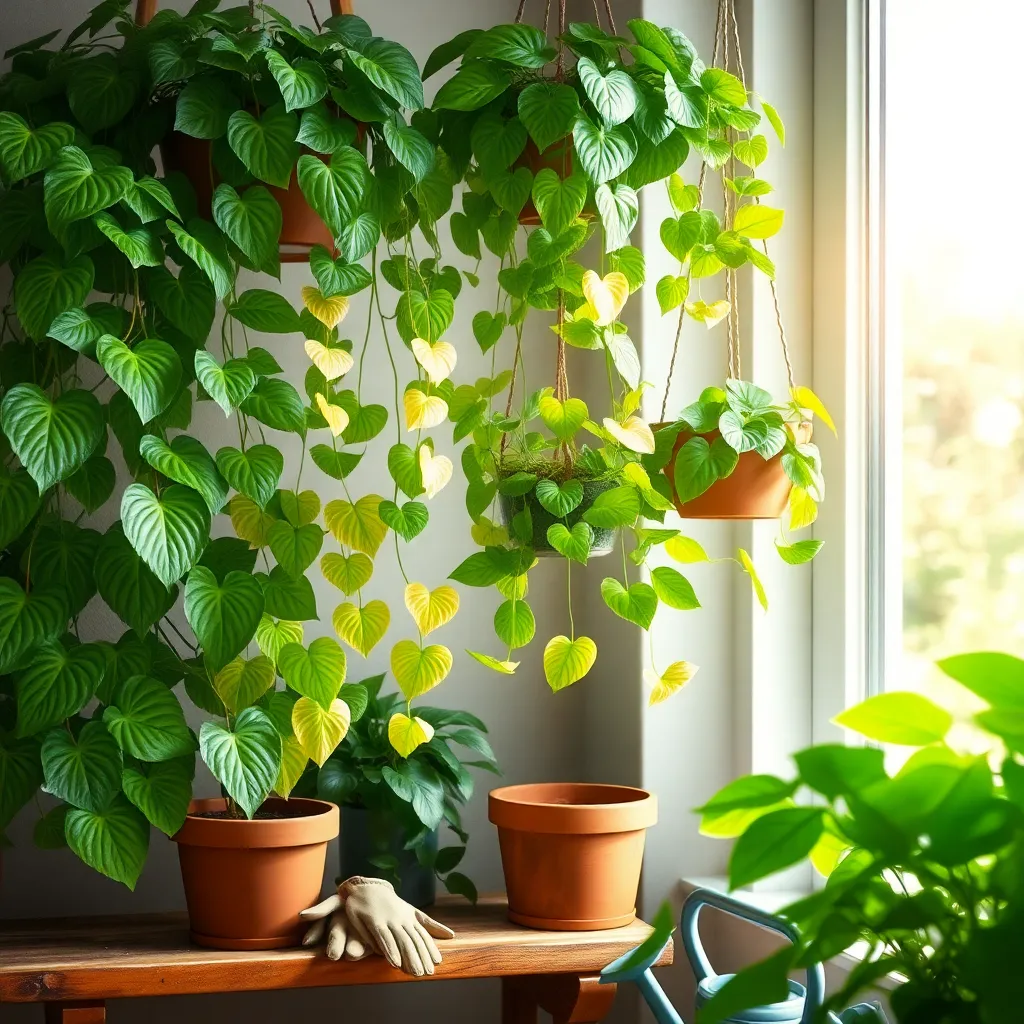
Pothos, known for their vibrant foliage, are a favorite among indoor gardeners due to their low-maintenance nature. They thrive in a variety of lighting conditions, making them an excellent choice for beginners.
Golden Pothos, with its heart-shaped leaves flecked in gold, is a classic variety. It can tolerate low-light conditions but displays more vivid variegation in brighter settings.
For a more unique look, consider the Marble Queen Pothos, which features striking white and green marbled leaves. This variety prefers brighter light to maintain its variegation, though it should be kept out of direct sunlight to prevent leaf scorch.
To ensure your pothos thrives, use a well-draining potting mix and allow the top inch of soil to dry out between waterings. Overwatering is a common mistake, so it’s better to err on the side of underwatering.
Feeding your pothos with a balanced liquid fertilizer every 4-6 weeks during the growing season can enhance its growth. Be cautious not to over-fertilize, as this can lead to salt build-up in the soil.
Advanced gardeners might try propagating pothos through stem cuttings. Simply snip a few inches of stem with at least one node and place it in water or soil to root.
Adding Anthurium’s Red Touch
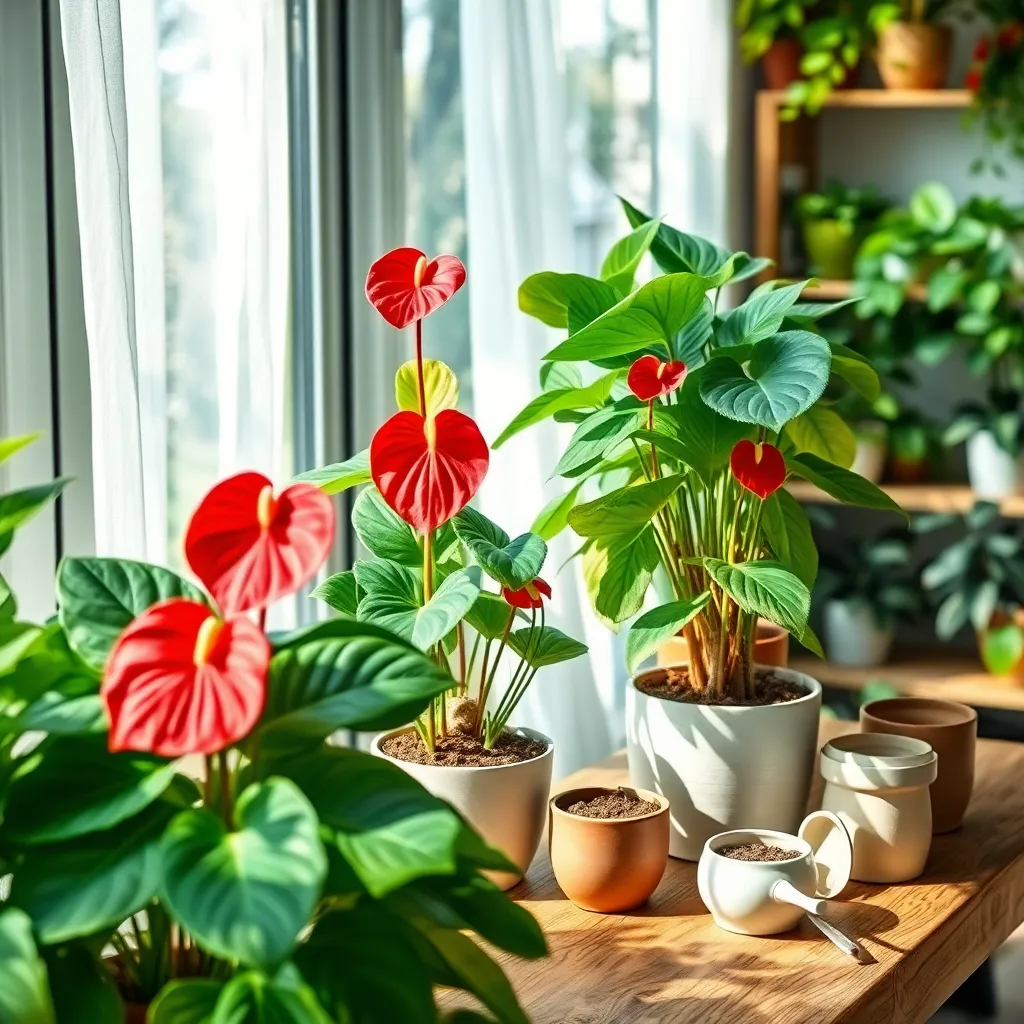
Anthuriums, known for their striking red blooms, add a vibrant touch to any indoor space. These tropical beauties thrive in environments that mimic their natural habitat, so maintaining a warm temperature and high humidity is key.
For beginners, placing anthuriums in well-draining potting mix is crucial for their success. A mix specifically for orchids or a blend of peat moss, pine bark, and perlite will provide the ideal conditions.
Water your anthurium when the top inch of soil feels dry to the touch, but avoid overwatering as this can lead to root rot. Using a pot with drainage holes helps ensure excess water escapes, keeping the roots healthy.
To encourage continued blooming, feed your anthurium a balanced liquid fertilizer every six to eight weeks during the growing season. Advanced gardeners can experiment with adjusting light levels—anthuriums prefer bright, indirect light but can tolerate lower light conditions for shorter periods.
Low-Light Loving Chinese Evergreen
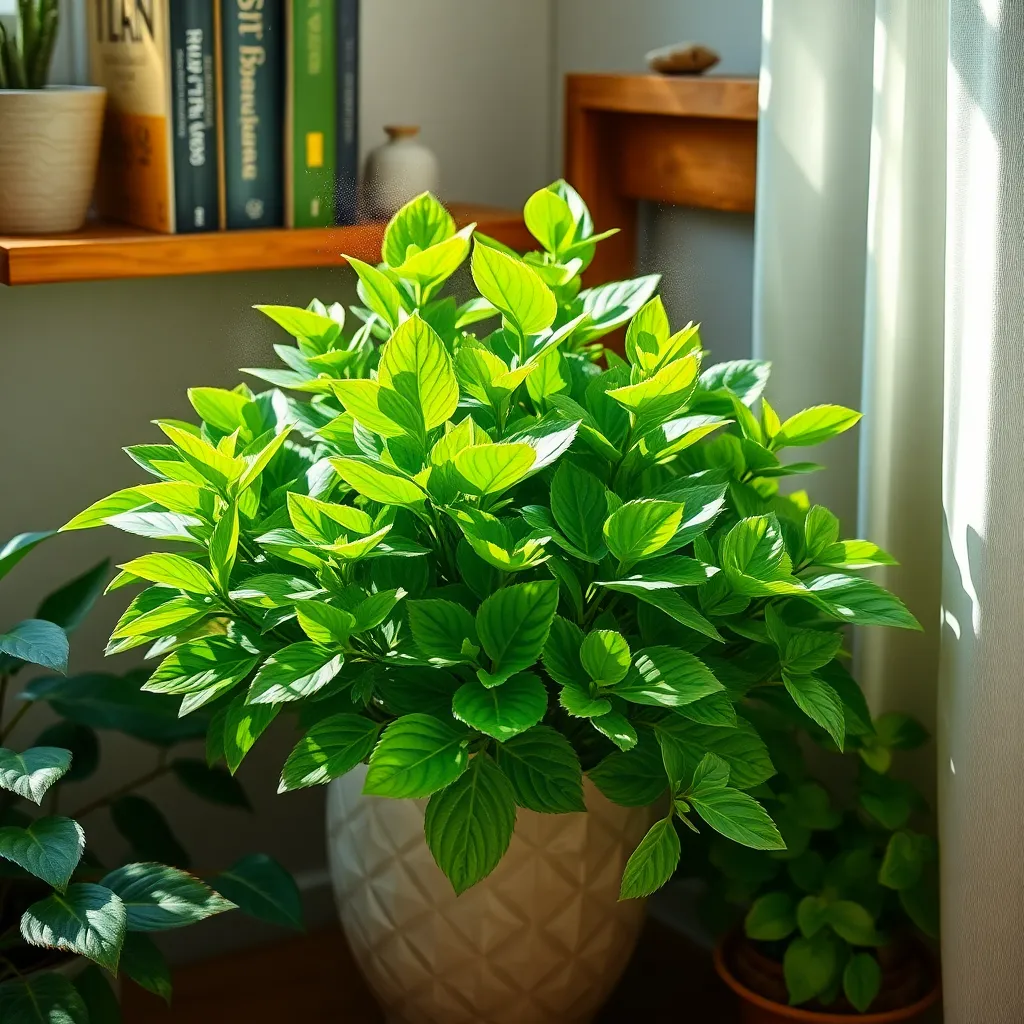
The Chinese Evergreen is a fantastic choice for those seeking a low-light indoor plant. Known for its striking foliage, it brings a splash of color to any room without requiring direct sunlight.
For optimal growth, place your Chinese Evergreen in a spot with indirect or filtered light. While it can tolerate low-light conditions, providing some indirect sunlight will enhance its vibrant leaf patterns.
Watering is straightforward; these plants prefer their soil to dry out slightly between waterings. Check the top inch of soil with your finger; if it feels dry, it’s time to water your plant thoroughly.
Ensure your Chinese Evergreen is planted in well-draining soil to prevent root rot. A mix that includes peat, perlite, and potting soil is ideal for maintaining the right balance of moisture and aeration.
For those looking to advance their care, consider occasional fertilization during the growing season. Use a balanced, water-soluble fertilizer every 4-6 weeks to support lush growth and vibrant coloration.
Zebra Plant’s Bold Stripes
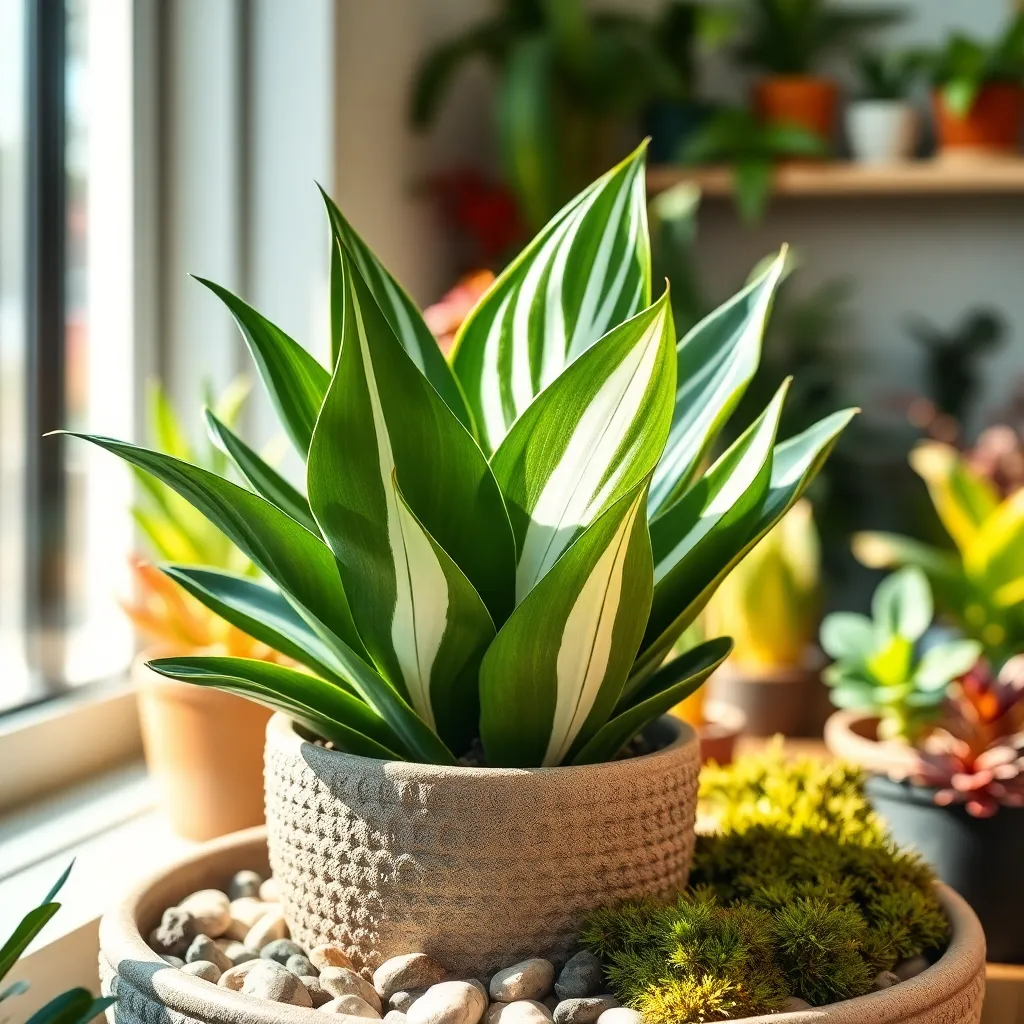
The Zebra Plant, known for its strikingly bold foliage with white stripes, is a captivating addition to any indoor garden. This plant thrives in bright, indirect light, making it ideal for rooms with filtered sunlight.
Watering your Zebra Plant requires a careful balance; it enjoys consistently moist soil, but overwatering can lead to root rot. A good rule of thumb is to water when the top inch of soil feels dry, ensuring the pot has adequate drainage.
For optimal growth, use a well-draining potting mix, such as one formulated for succulents or cacti. Fertilize with a balanced liquid fertilizer every 4-6 weeks during the growing season to encourage lush foliage.
Humidity is a friend to the Zebra Plant, as it thrives in environments with higher moisture levels. Consider placing it in a bathroom or using a humidifier to maintain humidity, especially in drier climates.
Caring for the Cheerful Croton
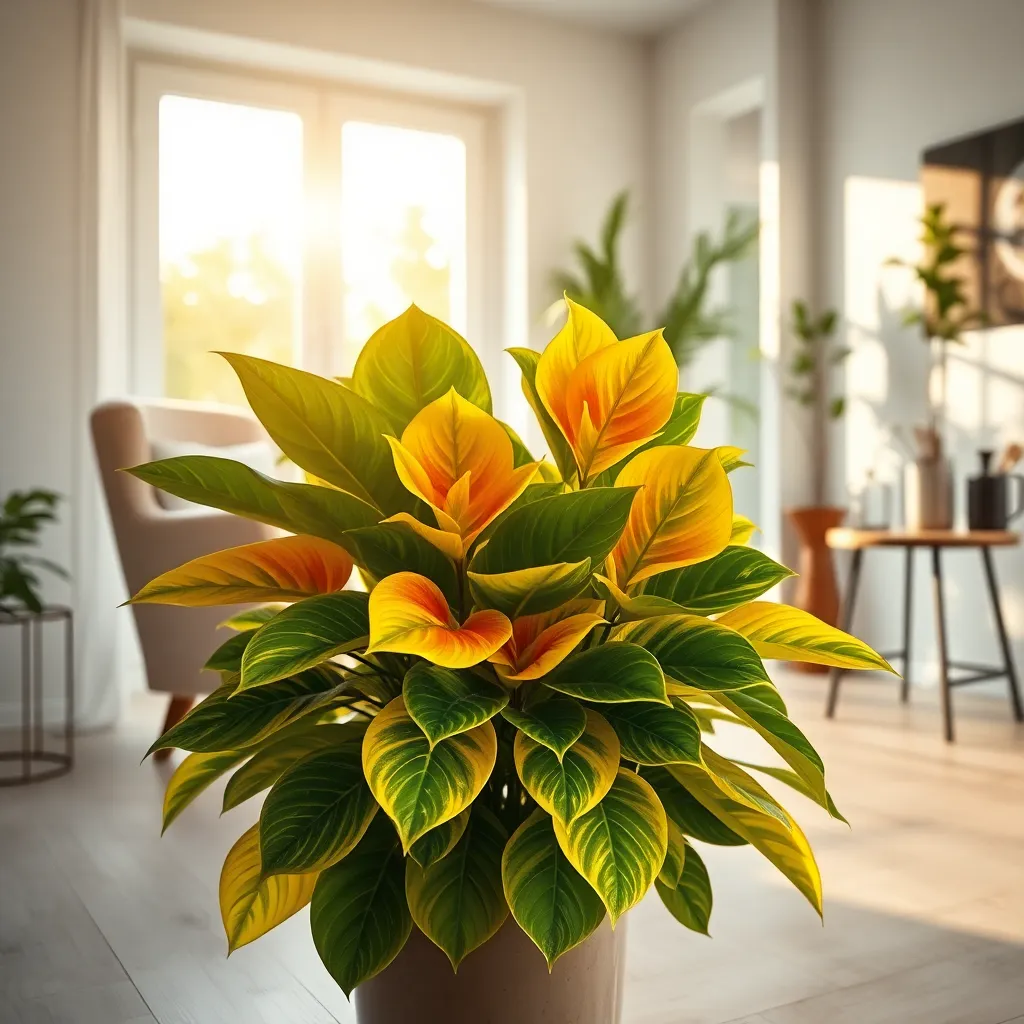
Crotons bring a burst of color with their vibrant foliage, making them a fantastic choice for indoor gardening beginners. They thrive in bright, indirect light, so placing them near a sunny window is ideal.
The key to a healthy croton is maintaining consistent moisture levels. Water them when the top inch of soil feels dry, ensuring good drainage to prevent root rot.
For best results, use a well-draining potting mix, such as a blend of peat moss, perlite, and pine bark. This combination helps keep the roots healthy by allowing excess moisture to escape.
Advanced gardeners might consider misting the leaves occasionally to boost humidity, especially in drier climates. A monthly feeding with a balanced liquid fertilizer can also enhance the plant’s vibrant colors.
Final Tips for Thriving Houseplants
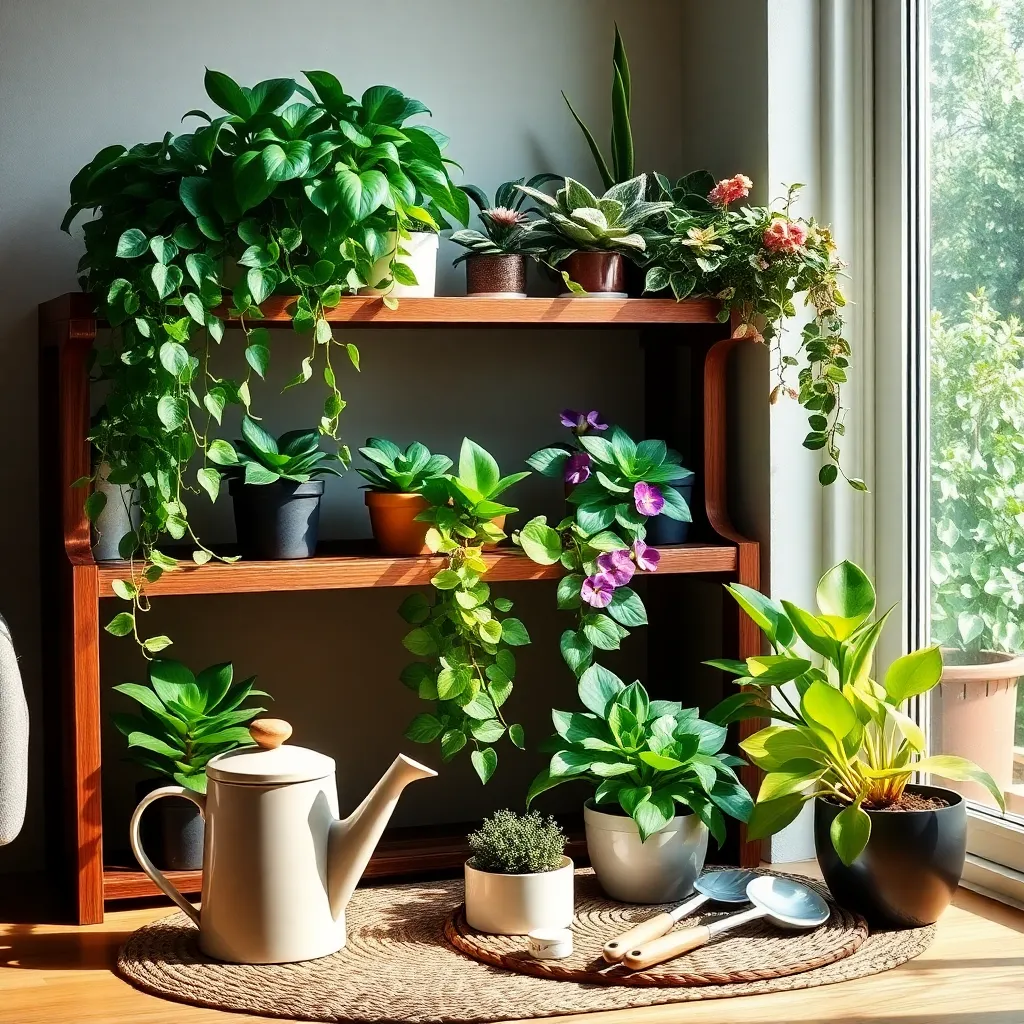
When caring for houseplants, understanding their specific light requirements is key to their success. Most indoor plants prefer bright, indirect light, but it’s crucial to know which plants can tolerate lower light conditions.
Proper watering is another essential aspect of maintaining healthy houseplants. It’s best to water deeply but infrequently, allowing the top inch of soil to dry out between waterings to prevent root rot.
Using the right soil can make a significant difference in plant health. Opt for a well-draining potting mix, and consider adding perlite or sand for plants that prefer drier conditions, such as succulents and cacti.
Fertilizing your houseplants can help them thrive, especially during the growing season. A balanced, water-soluble fertilizer every four to six weeks can promote healthy growth and vibrant foliage.
Regularly rotating your plants ensures even growth and prevents them from leaning towards the light source. This simple step can make a big difference in maintaining the shape and structure of your plants.
For those looking to take their plant care to the next level, consider monitoring humidity levels. Many houseplants, particularly tropical varieties, thrive in higher humidity, so you might use a humidifier or a pebble tray to increase moisture in the air.
Finally, keep an eye out for pests and diseases, which can quickly spread across your plant collection. Regularly inspect leaves and stems, and treat any issues with organic insecticidal soap or neem oil as needed.
Conclusion: Growing Success with These Plants
In exploring the vibrant world of indoor plants, we’ve uncovered 12 colorful varieties that serve as perfect companions for beginners. These plants not only add aesthetic appeal but also teach us valuable relationship lessons: patience, nurturing, adaptability, growth, resilience, communication, responsibility, attentiveness, balance, positivity, appreciation, and commitment. Just as each plant requires unique care to thrive, so do our relationships demand attention and understanding to bloom beautifully.
As your next step, why not choose one plant from the list and see how the care you invest in it parallels the attention you give to your relationships? This hands-on approach can deepen your understanding and commitment to nurturing both plants and connections.
To keep these insights at your fingertips, make sure to bookmark this article. It can serve as your go-to guide for both botanical and relational growth.
Remember, the journey to relationship success is ever-evolving, much like a garden. By tending to each bond with love and care, you cultivate a future rich with meaningful connections. Your relationships are worth every bit of effort; let this article be your roadmap to a flourishing relational landscape. Save it, refer back to it, and watch as both your plants and relationships thrive.







